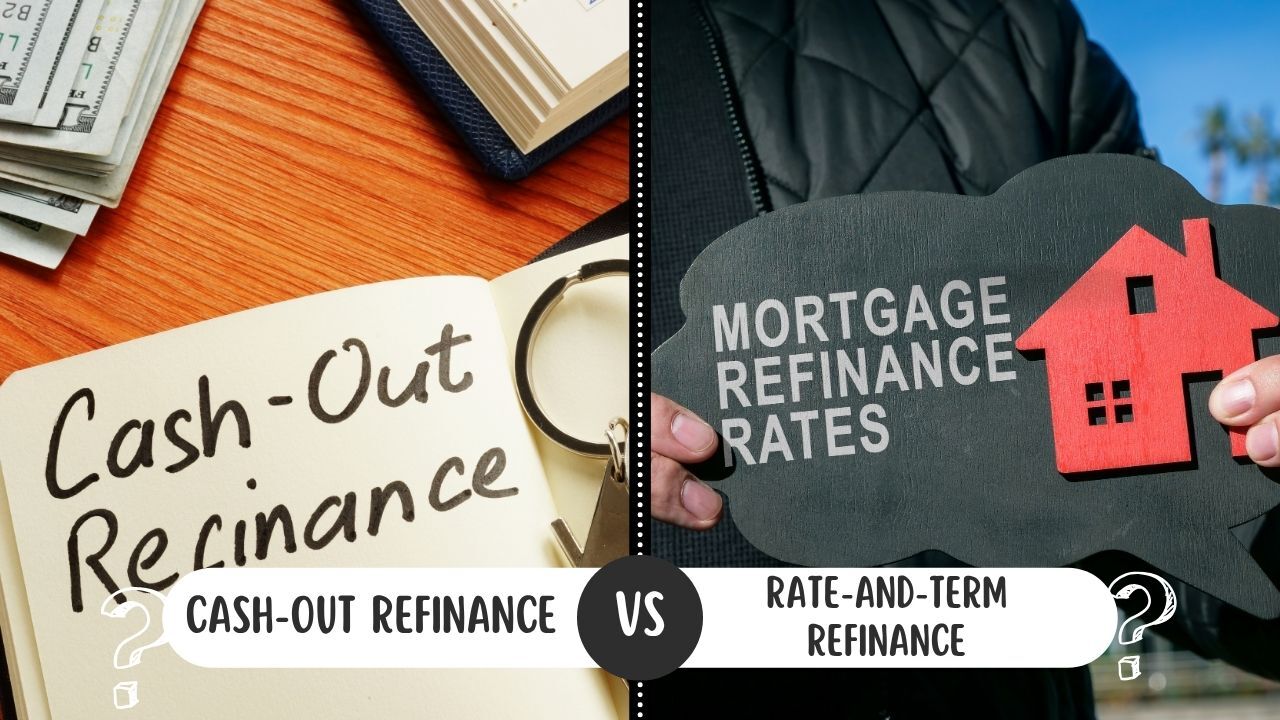 When considering refinancing your mortgage, two main options often come to the forefront: Cash-Out Refinance and Rate-and-Term Refinance. Both allow you to change the terms of your mortgage, but they serve different purposes and have distinct advantages. Understanding the differences between these two refinancing options is crucial to making an informed decision that best aligns with your financial goals.
When considering refinancing your mortgage, two main options often come to the forefront: Cash-Out Refinance and Rate-and-Term Refinance. Both allow you to change the terms of your mortgage, but they serve different purposes and have distinct advantages. Understanding the differences between these two refinancing options is crucial to making an informed decision that best aligns with your financial goals.
What Is a Cash-Out Refinance?
A Cash-Out Refinance allows you to replace your existing mortgage with a new one for more than you currently owe. You receive the difference in cash, which you can use for various purposes, such as paying off high-interest debt, funding home improvements, or covering significant expenses. This type of refinance is ideal if you have built up equity in your home and need extra cash for a specific financial need. It can provide an opportunity to consolidate debt or make investments, but it does come with risks. By increasing your loan balance, you may extend your mortgage term or raise your monthly payment, so it’s important to assess whether the cash received outweighs these potential costs.
What Is a Rate-and-Term Refinance?
A Rate-and-Term Refinance, on the other hand, does not provide any additional cash but focuses on modifying the terms of your existing mortgage. This could involve adjusting the interest rate, changing the length of your loan, or switching between a fixed-rate and an adjustable-rate mortgage (ARM). The primary goal of this refinance is to reduce your monthly payments or save on interest over the life of the loan. If interest rates have dropped since you took out your original mortgage, a Rate-and-Term Refinance can be an excellent way to secure a lower rate and reduce your financial burden without taking on additional debt.
Key Differences Between the Two Options
The fundamental difference between Cash-Out and Rate-and-Term Refinances lies in the purpose and outcome. With a Cash-Out Refinance, you’re borrowing more money, whereas a Rate-and-Term Refinance focuses on adjusting your current loan without increasing the amount owed. If you re looking for quick access to funds and have the financial ability to manage a larger loan, a Cash-Out Refinance may be the right choice. However, if you want to lower your monthly mortgage payment or reduce the interest you pay without taking on extra debt, a Rate-and-Term Refinance might be the better option.
When to Choose Each Option
Choosing the right refinance option depends on your financial situation and goals. A Cash-Out Refinance could be beneficial if you need to cover major expenses or want to invest in home improvements that could increase the value of your property. Conversely, a Rate-and-Term Refinance is ideal if you’re primarily focused on saving money in the long term and reducing your overall debt without taking on extra liabilities. It s essential to weigh the costs, benefits, and potential risks of each option before making your decision.
In either case, consulting with a mortgage professional can help guide you through the process and ensure you choose the best refinancing option based on your unique needs.
 If you have a reverse mortgage, you may be wondering whether refinancing is an option. The good news is that yes, you can refinance a reverse mortgage, and doing so may offer financial benefits depending on your situation. Here’s what you need to know about refinancing, including reasons to consider it, eligibility requirements, costs, and key factors to keep in mind.
If you have a reverse mortgage, you may be wondering whether refinancing is an option. The good news is that yes, you can refinance a reverse mortgage, and doing so may offer financial benefits depending on your situation. Here’s what you need to know about refinancing, including reasons to consider it, eligibility requirements, costs, and key factors to keep in mind.